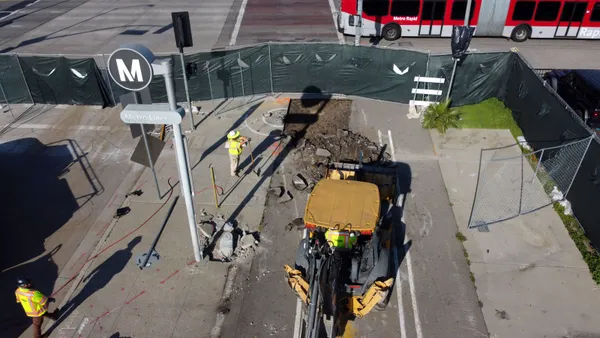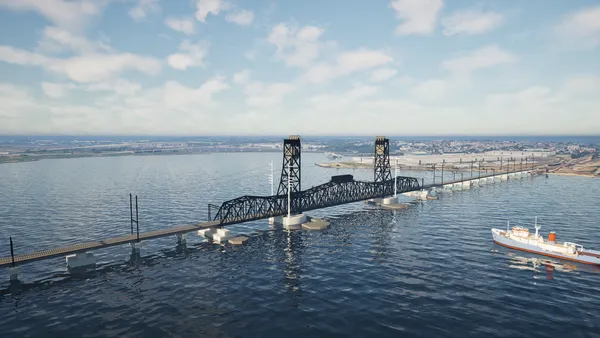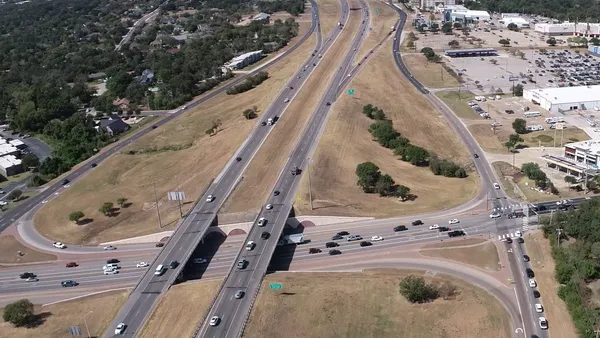Dive Brief:
- Demand for routine bridge inspections is expected to rise four times its current level to reach a market valuation of $6.3 billion by the end of 2029, according to research firm Fact.MR. A push for infrastructure modernization in the Asia-Pacific region the largest share of the market at 35%.
- The need for more bridge inspections will be driven by a combination of aging infrastructure, exposure to damaging environmental conditions and an increase in traffic volume, all of which speed up the deterioration of bridges. Without a proper program of inspection, DOTs and other responsible agencies will not be able to detect, at their earliest stages, potential costly issues of structural integrity or defects. Routine bridge inspections are estimated to make up 83% of the overall market. The demand for the construction of bridges is expected to increase three times in the next decade.
- Fact.MR said that the availability and increased adoption rates of mobile inspection robots, drones and virtual reality technology will improve the effectiveness and efficiency of bridge inspections and will provide opportunities for growth to companies in the sector.
Dive Insight:
The report identifies the companies that are expected to feature prominently in the sector, and that list includes WSP Global, Burns & McDonnell, ATS Engineering and design, engineering and consulting firm Stantec. Fact.MR said these and other providers will also seek to expand their market presence through acquisitions.
Ryan Nataluk, a vice president at Stantec and, based in Denver, the leader of the company's Nationwide Bridge Inspection Program, agreed that professional services for the inspection, management, design and rehabilitation of bridges has increased in the last several years and is expected to continue a pattern of strong growth, both in the U.S. and in the rest of the world.
"Countries that contribute heavily to the world’s economy understand that a robust transportation network of roads and bridges is required to effectively and efficiently transport goods and services to and from ports, distribution centers, markets and retailers," he said.
Stantec's share of the bridge inspection market has increased significantly during the last 10 years to encompass 16 states and foreign countries, like Canada, Australia, New Zealand, Barbados and Saudi Arabia.
In an environment of limited budgets for infrastructure, Nataluk said, owners are realizing that it is more cost-effective to invest in "proactive preservation and rehabilitation measures" instead of new construction made necessary because those assets have been allowed to deteriorate.
And, as the Fact.MR report indicated, new technologies have played a key role in the market.
"Many owners are turning to the use of more advanced methods of evaluation and non-destructive techniques on concrete and steel bridges to assist in their decision-making processes," Nataluk said.
"Some useful methods on concrete structures include the use of drones equipped with specialized sensors, such as infrared thermography to detect internal delaminations within the concrete that typically occur due to internal rebar corrosion, as well as conducting chloride sampling in bridge decks to determine contamination levels from typically utilized road salts for deicing," he said. "Chlorides within concrete react with the internal rebar to accelerate the corrosion and overall degradation process of the concrete."
Each year, Nataluk said, the tools and methods for determining and documenting the deterioration of bridges improve.
And not only the private sector has turned to technology as a way to improve the efficiency of bridge inspections. A 2018 American Association of State Highway and Transportation Officials survey found that 35 state DOTs were using drones to inspect bridges and monitor other infrastructure. The Minnesota DOT reported that drone-assisted inspections saved it an average of 40% when compared to more traditional inspection methods.













